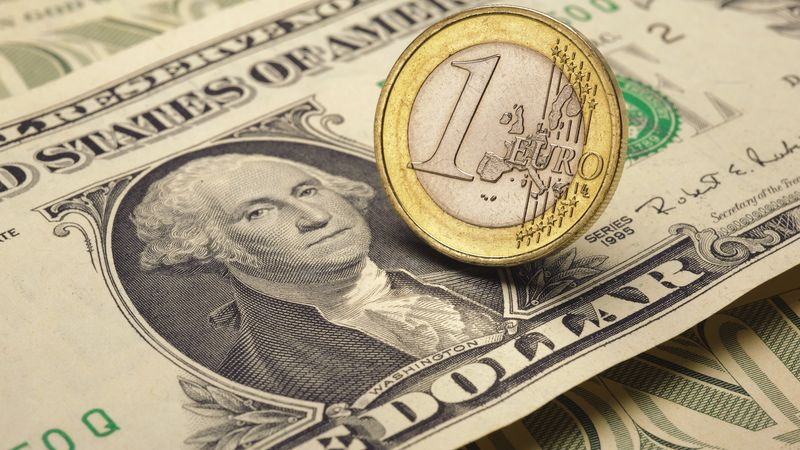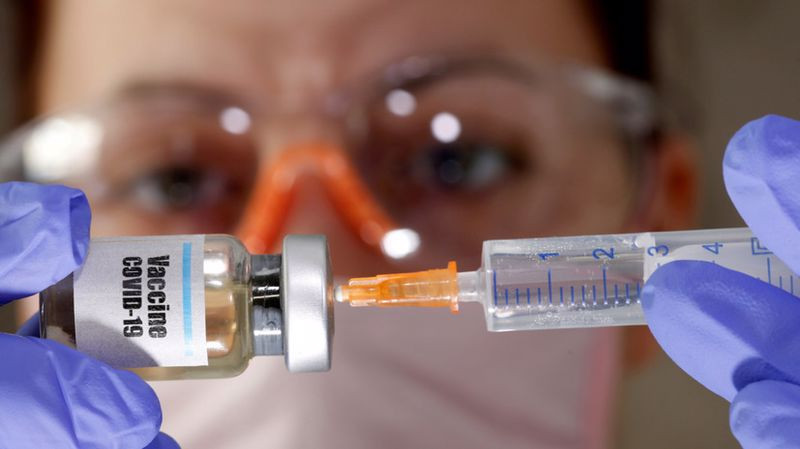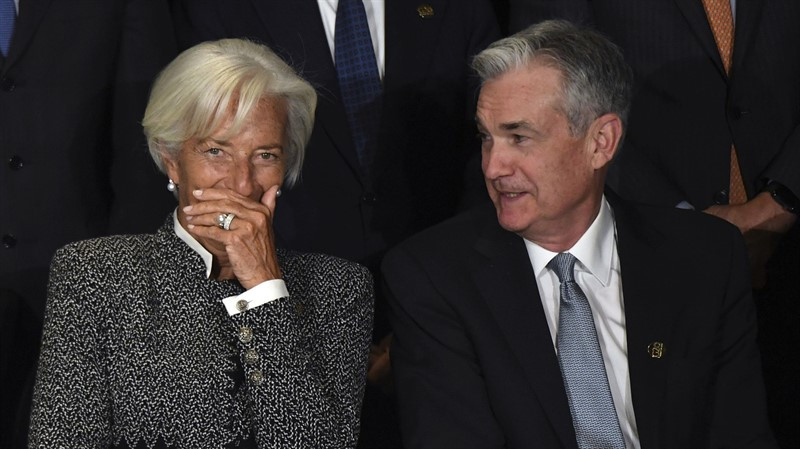
Omicron continues to orchestrate global markets, which eagerly catch any emerging information regarding the new COVID-19 strain.
Drug manufacturers, in turn, express conflicting opinions about how effective existing vaccines can be against Omicron. The lack of specific information causes uncertainty, and with it volatility in financial markets.
The main Wall Street indexes ended in positive territory on Monday, increasing by an average of 0.7-1.9%, after a sharp drawdown on Friday amid reports of the detection of a new strain of COVID-19 in South Africa.
However, on Tuesday, US stock indexes sank by 1.6-1.9%. Pressure on the market was exerted by the same concerns about the new version of the coronavirus.
Despite the fact that the potential appearance of Omicron in the United States was expected, the official statement about it turned out to be enough for the US stock market, which had previously been quite positive, to fall on Wednesday.
The day before, the US Department of Health announced that the first case of infection with Omicron was detected in the state of California in a fully vaccinated person who recently returned from southern Africa.
A new version of the coronavirus named "Omicron" came into the world and scared the financial markets, however, according to strategists at JPMorgan Chase, now is the time to buy on downturns.
They proceed from the fact that historically, each new strain of the virus is less dangerous, but more contagious. Thus, new variants quickly displace deadly predecessors and the pandemic is fading. From this point of view, Omicron will become a catalyst that transforms the pandemic into something more similar to seasonal flu.
"If events develop according to this scenario, WHO could skip not two letters, but all at once, and call the new variant "Omega" – according to the last letter of the Greek alphabet," JPMorgan Chase noted.
If the end of the pandemic looms somewhere in the distance– it will be good news for high-risk markets, but National Australia Bank analysts urge not to draw premature conclusions.
"The truth is that we have less than a week left before the 2-3-week deadline, which, in the opinion of everyone worth listening to – epidemiologists, not market analysts - is necessary before an informed decision can be made both regarding the severity of this variant of COVID-19 and the effectiveness of existing vaccines," they said.

The current week turned out to be turbulent in the foreign exchange market, where monthly volatility indicators of the euro against the dollar reached the highest levels since the beginning of the year on Monday.
According to ING analysts, the volatility of the EUR/USD pair jumped as the new strain of coronavirus is seen as a positive factor for the euro, as it is able to slow down the tightening of the Federal Reserve's monetary policy, while the hawkish remarks of the head of the US central bank Jerome Powell, suggesting that inflation is a priority, act as a negative factor for the single currency.
After the sharp fluctuations noted at the beginning of the week, the main currency pair entered the consolidation mode. If it breaks above 1.1400 from the current levels, it will continue to grow. If the pair falls below 1.1300, it means that it has yet to update 16-month lows.
Investors will remain cautious until they learn more about the new COVID-19 strain, according to Invesco strategists.
The USD index continues to circle around the 96-point mark, as traders cannot decide in any way whether they should bet on the further growth of the US currency in light of the worsening epidemiological background in the world, and are weighing what the Omicron option can do with the plans that Powell announced this week.
Despite the uncertainty generated by Omicron, the Fed chairman reiterated on the second day of his speech to Congress on Wednesday that he and his colleagues will consider the possibility of a faster curtailment of the bond purchase program at the upcoming meeting in December, which could open the door for an earlier increase in interest rates.
The data published on Wednesday for the United States pointed to the continued recovery of the US labor market, indicating in favor of reducing monetary incentives.
The ISM index of business activity in the US manufacturing sector in November rose to 61.1 points from 60.8 points recorded in October. At the same time, employment and new orders also increased.
A separate report from ADP reflected that the number of jobs in the US private sector increased by 534,000 last month, which turned out to be better than the average forecast of 525,000.

Although the legislators did not ask Powell questions about how the new COVID-19 variant could change the economic prospects of the United States or the Fed's response policy, New York Fed President John Williams said on Wednesday that it could both slow down economic activity and increase inflationary pressure.
This complex combination may exacerbate the problems that Fed policymakers will face as they calibrate their response to good news about the strengthening economy and bad news about a possible new surge in coronavirus and inflation, which persists longer and remains higher than expected.
"Market participants are still in the process of assessing the potential scale of the destructive impact of the new variant of COVID-19 and the further turn of the hawkish policy of the Fed. If the central bank does not expect that the growth of the US economy will slow down sharply next year, it will continue to tighten policy. This leaves room for further strengthening of the dollar," MUFG Bank noted.
A relatively soft fiscal policy may force the Fed to tighten the monetary policy more actively than other central banks, Bank of America analysts believe. They lowered the forecast for EUR/USD to 1.1000 by the end of 2022.
"Our expectations regarding the strengthening of the US dollar against major currencies are associated not so much with a new long-term strengthening of the greenback, but with cyclical differences in monetary policy, which is likely to be reflected in the dynamics of the foreign exchange market," Bank of America reported.
A similar opinion is shared by UBS Global Wealth Management specialists, who expect to see the EUR/USD pair at the level of 1,1000 by the end of 2022.
"The Fed is on the path of tightening monetary policy, unlike other major central banks such as the ECB, which maintain a relatively flexible stance," they said.
At the same time, analysts admit that the main currency pair may reach the target of 1.1000 even earlier – in mid-December, if the Fed accelerates the curtailment of quantitative easing, and the ECB, due to the deterioration of the epidemiological situation in Europe, shows restraint in tightening monetary policy.

Powell said on Tuesday that it was time to drop the term "temporary" when describing price increases, opening the door for a faster withdrawal from monetary stimulus.
This makes investors wonder whether its counterparts on the other side of the Atlantic are ready to follow the example of the Fed.
Although inflation in the eurozone has already reached its highest level in the last 25 years and is more than twice the ECB's target of 2%, ECB President Christine Lagarde and ECB chief economist Philip Lane stick to their formulations about the transient nature of inflation, which, in their opinion, will weaken over time.
A potential headache for the central bank is that inflation may decline for months and remain above the ECB's target until at least the second half of 2022, which is a communication problem for the bank, which has been struggling with low inflation for a decade and has little experience in price growth above its target.
"We are seeing more and more signs of increased inflationary pressures in the eurozone, which confirms our view that the current price shock will be less temporary than the ECB thinks," BNP Paribas strategists said.
Thus, a change of views in Frankfurt may not be far off.
So far, the positions of central banks on different sides of the Atlantic regarding the factors stimulating price growth seem to be completely different, supporting the divergence in the policy of the ECB and the Fed and hinting at the bearish prospects of the EUR/USD pair.
It has been trading in a narrow range since Tuesday - 1.1300-1.1360. However, the fragile balance may be disturbed by the data on US employment, which will be published on Friday. Strong numbers can trigger an update of the lows for the pair.
However, in conditions of uncertainty, reinforced by factors such as the new COVID-19 strain, the market may not pay attention to the November figures for the US labor market.
"We usually emphasize the importance of American employment data, but instead we have to juggle the current flow of news and headlines about a new variant of the coronavirus. So, it may be necessary to save this data for a subsequent delayed reaction if the influence of the Omicron variant weakens," Saxo Bank noted.
 English
English 
 Русский
Русский Bahasa Indonesia
Bahasa Indonesia Bahasa Malay
Bahasa Malay ไทย
ไทย Español
Español Deutsch
Deutsch Български
Български Français
Français Tiếng Việt
Tiếng Việt 中文
中文 বাংলা
বাংলা हिन्दी
हिन्दी Čeština
Čeština Українська
Українська Română
Română

